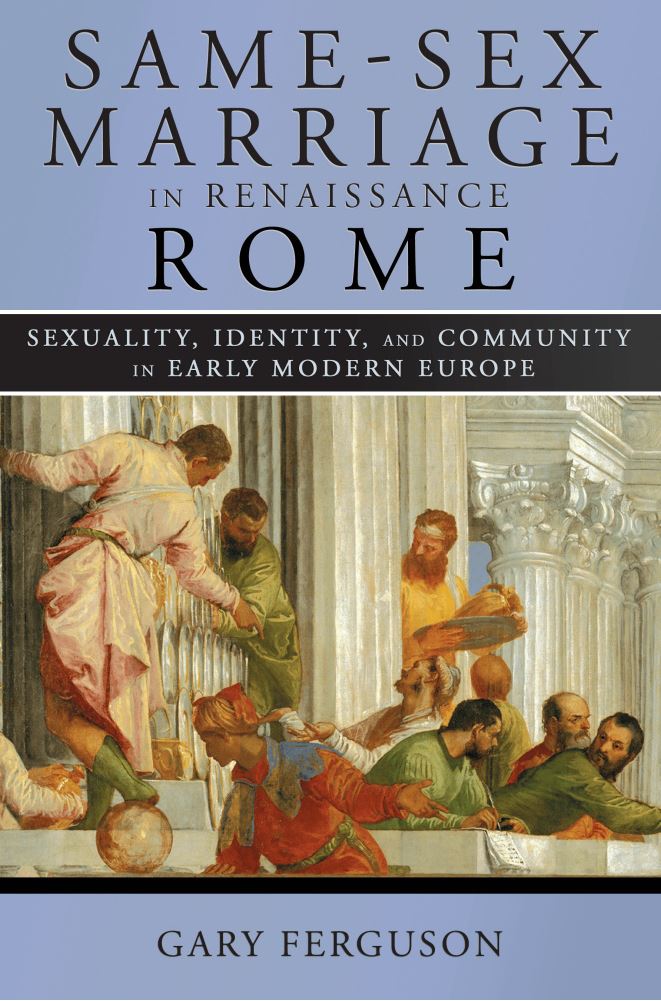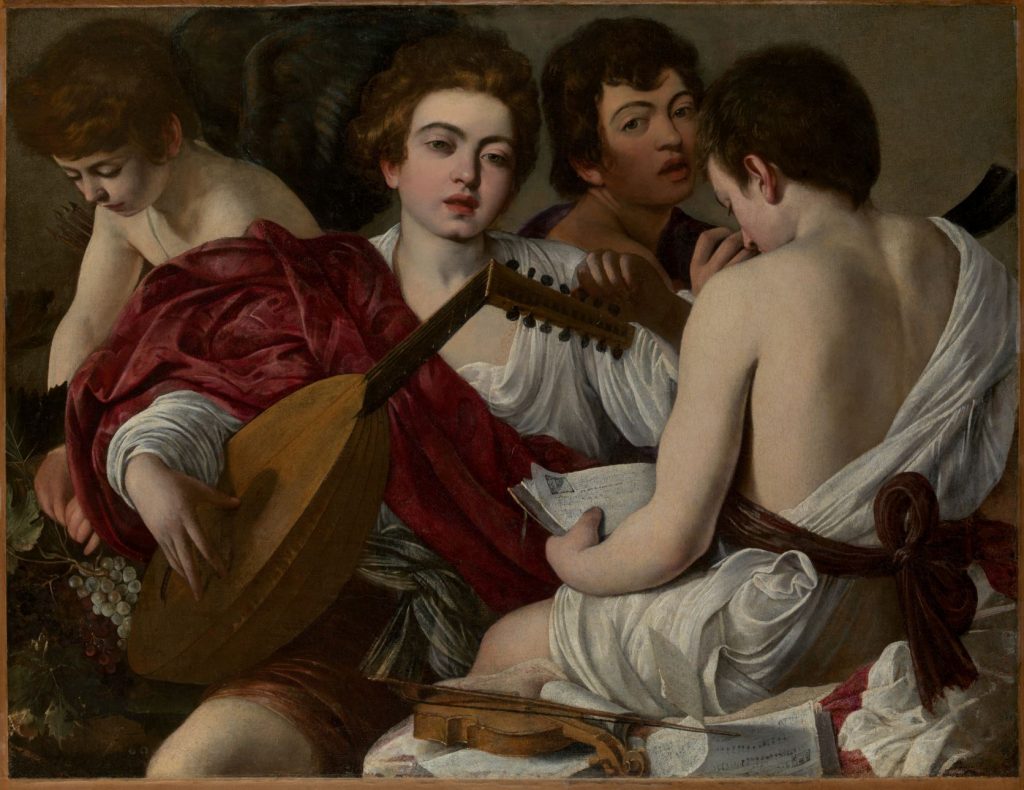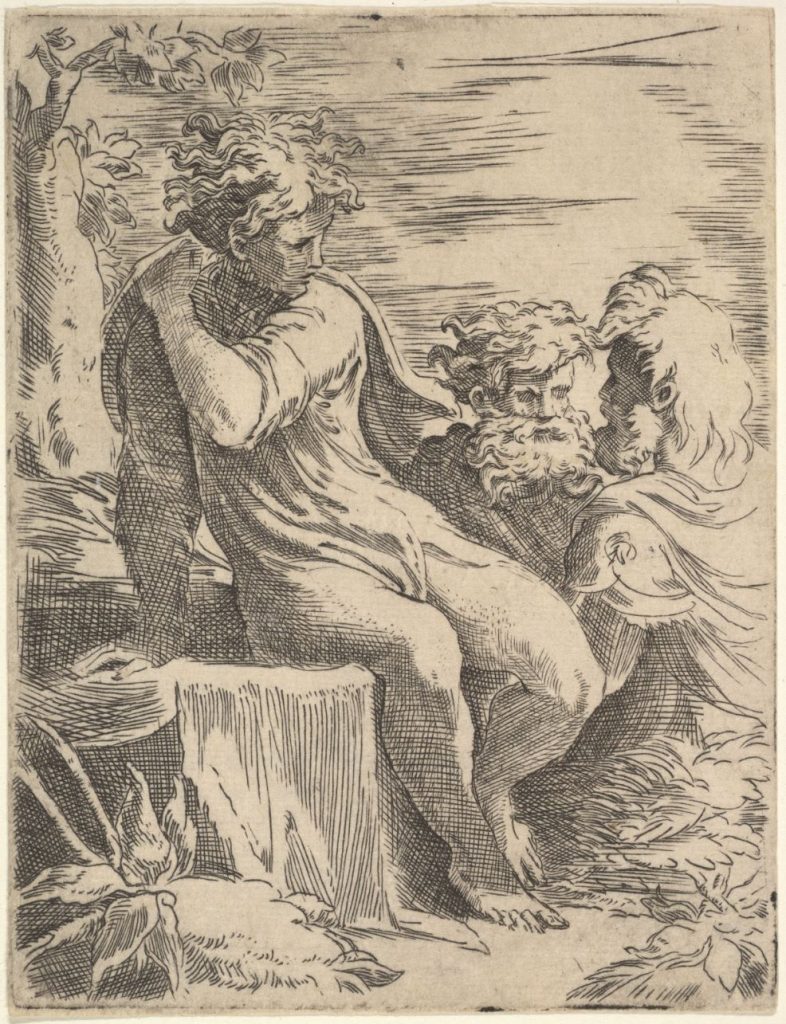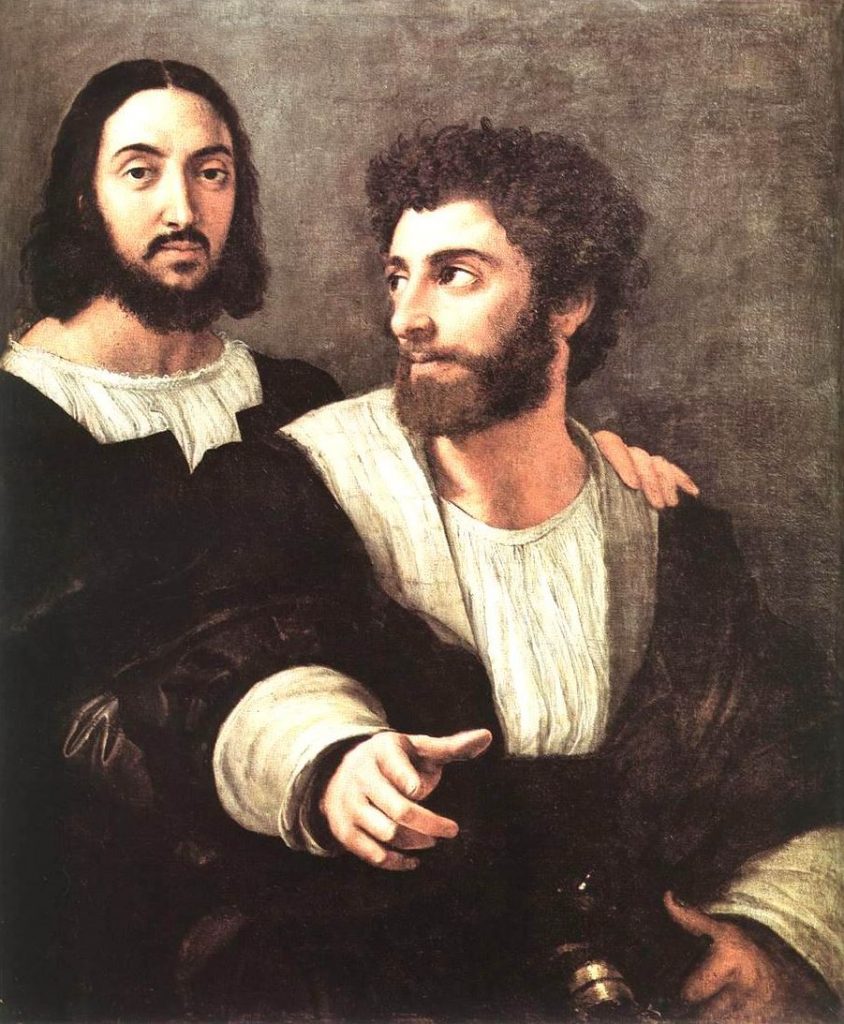Interview by Katherine Harvey
In Same-Sex Marriage in Renaissance Rome: Sexuality, Identity, and Community in Early Modern Europe, Gary Ferguson uncovers a same-sex wedding in sixteenth-century Rome. The ceremony in question involved a group of mostly Iberian men, who were executed in 1578, having been found guilty of performing same-sex marriages in a Roman church. Drawing on sources including Montaigne’s travel journal and the fragmentary records of the men’s trial, Ferguson recreates the lives of this small group of men, whilst simultaneously exploring early modern attitudes to marriage, sex and gender. Ultimately, he argues that same-sex unions should be considered as an integral part of the long, complex and hotly contested history of marriage.

Katherine Harvey: Your book discusses a same-sex wedding ceremony in sixteenth-century Rome. Can you summarise the story for us?
Gary Ferguson: The men involved were mostly poor immigrants to the city of Rome from Spain and Portugal, though the group also included a number of clerics. They would meet at the church of Saint John at the Latin Gate, a remote location on the outskirts of the city. Here, where one of them lived and was likely employed, they performed wedding ceremonies between some of their members. What exactly these ceremonies consisted of and what their intention was remain surrounded by many questions. Some sources refer to marriages celebrated after mass, others to the giving of rings, the officiating of a hermit, or to adolescents acting under constraint or even dressed as young women. The fullest information we have relates to a wedding planned for Sunday 20 July 1578 between two men named Gasparo and Gioseffe. In the end, that celebration didn’t take place, as Gioseffe failed to appear (he was said to have fallen ill and gone to hospital). The Roman police, however, did arrive, evidently having been tipped off, and arrested eleven of those present. Eight prisoners were subsequently hanged and their bodies burned. As the sources reveal, the planned wedding was to be a prelude to a large feast that had been prepared and to the marriage’s consummation, i.e., to sexual activity between the partners and perhaps between others present also.
KH: How do we know about this case? Who recorded it and why?
GF: The best-known account is found in the Travel Journal (1580-1581) of the famous French essayist, Michel de Montaigne. Montaigne made an extended visit to Rome and was told about the marriages three years after the events took place. A number of other sources describe the case as it unfolded, including diplomatic dispatches and newsletters (avvisi) to rulers and governments in other parts of Italy (Urbino, Venice), as well as to the German family of bankers, the Fuggers. Most importantly, several fragments of the transcript of the men’s trial have survived, giving us access to some of the interrogations conducted by the court of the Governor of Rome. Various details can also be gleaned from entries in the registers of the Confraternity of San Giovanni Decollato (Saint John the Beheaded). This group of pious laymen took charge of prisoners sentenced to death in the hours leading up to and following their execution. Unfortunately, much evidence relating to the case was also destroyed or has been lost. The sources that remain are partial and inscribed in particular socio-rhetorical contexts. As with those of other colonized and persecuted individuals and groups, this is a history characterised by persistent gaps and silences.

KH: What did these men hope to achieve through marriage?
GF: Given the information currently available, it’s not possible to say with certainty. Montaigne records a witticism circulating in Rome that presents the men as believing the sacrament would make sexual relations between them sinless, as between a man and a woman who were married. That statement and its transmission require considerable ‘unpacking’ however. Moreover, it seems probable that those getting married weren’t planning to embark on a sexually exclusive relationship or to live together. In general, the group’s life was characterised by a significant degree of promiscuity and one of the intended spouses (Gioseffe) was in fact a friar. The collectively organised feast, moreover, served no necessary religious purpose, but was of great importance to the men, even though it added considerably to their chances of being detected. The evidence thus points, I believe, to a multiplicity of motivations (serious, parodic, and polemic), and to a polyvalent, queer appropriation. While it’s likely that the wedding was intended to recognise and sanction in some way the relationship between Gioseffe and Gasparo, it was clearly not doing this in a straightforward or traditionally conjugal manner. One of its major functions was also that of expressing and building community among the group as a whole. And this is something we see evidence of in other situations in sixteenth-century Italy which involve the imitation of religious and social rituals by marginalised individuals.
KH: Is this a unique case?
GF: There was a lot of ludic social activity surrounding marriage or its simulation in early modern Italy. ‘Marriages’ were celebrated between some courtesans and a particular client/patron, for example. A case investigated by the Inquisition in Naples involved parodic marriages between friars and adolescent boys. There are also references in literary and religious texts and legal documents to two people of the same sex (men or women) exchanging vows and/or rings. The Roman case needs to be situated in this historical context, but it also offers evidence of practices not seen clearly in other cases to date.
KH: How does this case relate to sixteenth-century ideas and concerns about marriage?
GF: Marriage was in a state of considerable flux at the time and disputes concerning the validity or clandestinity of unions were rife. Nevertheless, following the new rules promulgated by the Council of Trent in 1563 (the Tametsi decree), the process was underway by which the Church would establish its control and impose its authority. That the friends at the Latin Gate laid claim to marriage – as opposed to a sworn brotherhood, for example – might be understood in the light of this emerging social and religious hegemony. On the other hand, it might also reflect more traditional attitudes whereby only the consent of the two spouses was necessary to contract matrimony, not the presence of a priest or even of any witnesses.
KH: If same-sex marriage was not permitted, what forms of male-male relationship were expected/allowed? How were same-sex relationships conceptualised in the sixteenth century?
GF: Relationships between males typically involved one older, sexually active partner and one younger, sexually passive partner. This pederastic model was not confined to a particular minority group within the population, but formed part of the general culture. Such relationships were, at one and the same time, illegal and subject to prosecution, and widespread and deeply embedded within a patriarchal social structure. When a relationship between an apprentice and his master was maintained over a period of time, for example, people might start accusing the older man of keeping the youth ‘as his wife.’ Historians working on Italy, Spain, France, and England have documented the prevalence of this form of relationship in all these countries.

KH: Many of the key players in this case were Iberian immigrants, with Jewish backgrounds/connections. Is this story as much about race as sexuality? How did the two interact?
GF: Following the sack of Rome by the imperial army of Charles V in 1527, the city was home to a large and influential Spanish population. In 1581, Charles’s son, Philip II, imposed his claim to sovereignty over the previously independent kingdom of Portugal. The fact that the men who met at the Latin Gate were immigrants, all but one of them from Iberia, as well as of very low social status is certainly a crucial factor in their story – from their becoming friends to their ultimate arrest and execution. The possibility that some of them had Jewish origins remains an open question. Although they were all practising Christians, one source refers to them as Marranos, i.e., so-called New Christians: descendants of Jews forced to convert, like Muslims, in order to avoid expulsion from Spain in the wake of the Reconquista. While this may simply represent a form of insult, evidence points to the existence of connections between members of the group and Jews in Rome. Jewish youths, for example, used to visit Saint John at the Latin Gate on Saturdays. At the very least, then, we catch a glimpse of a sexual culture cutting across religious divides, and of commonality and even an apparent solidarity, between two marginalised populations.
KH: The witness statements from the trial provide intimate details of the relationships between various men. How does this evidence alter our understanding of premodern male sexual behaviour, including ideas about passivity?
GF: An unexpected and important discovery to emerge from the trial transcript is the evidence detailing the variety and flexibility of certain of the men’s sexual practices. While some of their behaviour conforms to the pederastic model described earlier, much of it doesn’t. Some of the older men preferred to take a passive sexual role; others were alternately active and passive, sometimes with the same partner. This is extremely valuable testimony since the lack of documentation of these practices in earlier periods has led some historians to associate them with ‘modern’ sexuality seen as developing around the eighteenth century. The significant presence of these behaviours here opens up the possibility that they may have been considerably more common than has previously been believed.

KH: In the final section of the book, you compare Renaissance Rome with Enlightenment Paris. What had changed, and what had stayed the same? What does this comparison tell us about early modern sexual culture and behaviour?
GF: The object of the comparison is to put into dialogue two periods, the later, as just mentioned, often associated with the emergence of modern sexuality (involving particular forms of identity and subcultures), the earlier considered as predating these. I want to show how the San Giovanni friends and the Parisians known as the gens de la manchette share certain characteristics while remaining distinct from each other. The conclusion I draw from this isn’t so much to suggest that the date of the emergence of modern forms of homosexuality should be pushed back to the sixteenth century, though it would be possible to make that argument. Instead, I want to highlight how both periods offer examples of the coexistence and overlapping of different paradigms rather than the neat displacement of one by another; both periods, you could say, look back to a past as well as forward to a future.
KH: Can we describe these men (both the Romans and the Parisians) as homosexuals? Do you think it is possible to speak about homosexual identity before the twentieth century?
GF: It really depends on how we define these terms. Identities are formed in different ways in different societies and at different times. But if by ‘homosexual identity’ we mean simply an exclusive or primary and enduring attraction to people of the same rather than of the opposite sex, then I think we find this in the sixteenth and the eighteenth centuries (and probably throughout history) – though the meanings, forms, and modes of expression of that desire are culturally contingent. Scholars often look for other characteristics in addition, however, such as the adoption of some form of self-identification or ‘life style’ or being part of a discernible subculture (with shared meeting places, forms of sociability, slang, and so on). These can be found in both the eighteenth- and the sixteenth-century groups, though in the former more clearly and more firmly established. At the same time, in different ways and to different degrees, both groups remain implicated in traditional social and sexual formations of their age, such as pederastic structures of desire. Again, then, we need to be attentive to these different coexisting models – which applies no less to the present. As queer critics remind us (and as a term like ‘post-gay’ illustrates), we cannot assume homosexuality ‘as we know it today’ to be ‘self-evident and self-identical’.
KH: What relevance does this case have for modern homosexuals? What part might it play in modern debates over same-sex marriage?
GF: In the second half of the twentieth century, the women’s movement was able to bring about enormous changes in marriage, establishing it on a basis of much greater equality. This is the reason why access to marriage has become the primary goal of gay and lesbian activism in recent decades. That said, it’s clear that the idea of same-sex marriage is not a uniquely modern one. The Roman case – and many others that I refer to between women as well as between men – show that same-sex couples in the early modern period claimed marriage in their own particular ways. At the same time, the men who met at the Latin Gate and the stories they generated – stories of sexual licence and a risky commitment to community celebration – resist the hegemony of the ‘nuclear’ couple. In this way, they appear ready to stand for the right of gays and lesbians to marry and to question the normative institution of marriage; they’re ‘usable’ for both LGBT and queer political ends.
 Gary Ferguson is Douglas Huntly Gordon Distinguished Professor in the Department of French at the University of Virginia. His research encompasses sixteenth-century literature and culture; gender, sexuality, and queer studies; women’s writing; and the history of religion. His latest book, Same-Sex Marriage in Renaissance Rome: Sexuality, Identity, and Community in Early Modern Europe, appeared with Cornell University Press in 2016. His previous works include Mirroring Belief: Marguerite de Navarre’s Devotional Poetry (Edinburgh, 1992), Queer (Re)Readings in the French Renaissance: Homosexuality, Gender, Culture (Ashgate, 2008), and A Companion to Marguerite de Navarre, edited with Mary McKinley (Brill, 2013).
Gary Ferguson is Douglas Huntly Gordon Distinguished Professor in the Department of French at the University of Virginia. His research encompasses sixteenth-century literature and culture; gender, sexuality, and queer studies; women’s writing; and the history of religion. His latest book, Same-Sex Marriage in Renaissance Rome: Sexuality, Identity, and Community in Early Modern Europe, appeared with Cornell University Press in 2016. His previous works include Mirroring Belief: Marguerite de Navarre’s Devotional Poetry (Edinburgh, 1992), Queer (Re)Readings in the French Renaissance: Homosexuality, Gender, Culture (Ashgate, 2008), and A Companion to Marguerite de Navarre, edited with Mary McKinley (Brill, 2013).
 Katherine Harvey is Wellcome Trust Research Fellow at Birkbeck, University of London, where her research focuses on the pre-Reformation English episcopate. Her first book, Episcopal Appointments in England, c. 1214- c. 1344, was published by Ashgate in 2014, and she has also written several articles on the medieval episcopal body. Her current research project is ‘Medicine and the Bishop in England, c. 1100- 1400.’ She tweets from @keharvey2013
Katherine Harvey is Wellcome Trust Research Fellow at Birkbeck, University of London, where her research focuses on the pre-Reformation English episcopate. Her first book, Episcopal Appointments in England, c. 1214- c. 1344, was published by Ashgate in 2014, and she has also written several articles on the medieval episcopal body. Her current research project is ‘Medicine and the Bishop in England, c. 1100- 1400.’ She tweets from @keharvey2013

NOTCHES: (re)marks on the history of sexuality is licensed under a Creative Commons Attribution-NonCommercial-NoDerivatives 4.0 International License.
Based on a work at www.notchesblog.com.
For permission to publish any NOTCHES post in whole or in part please contact the editors at NotchesBlog@gmail.com




